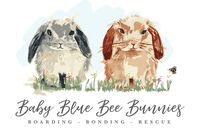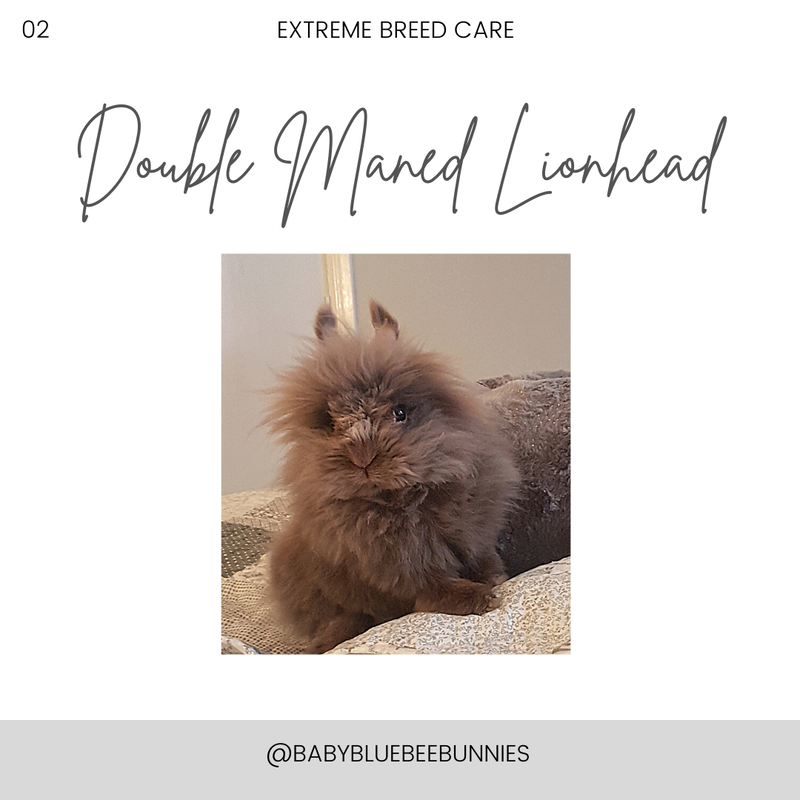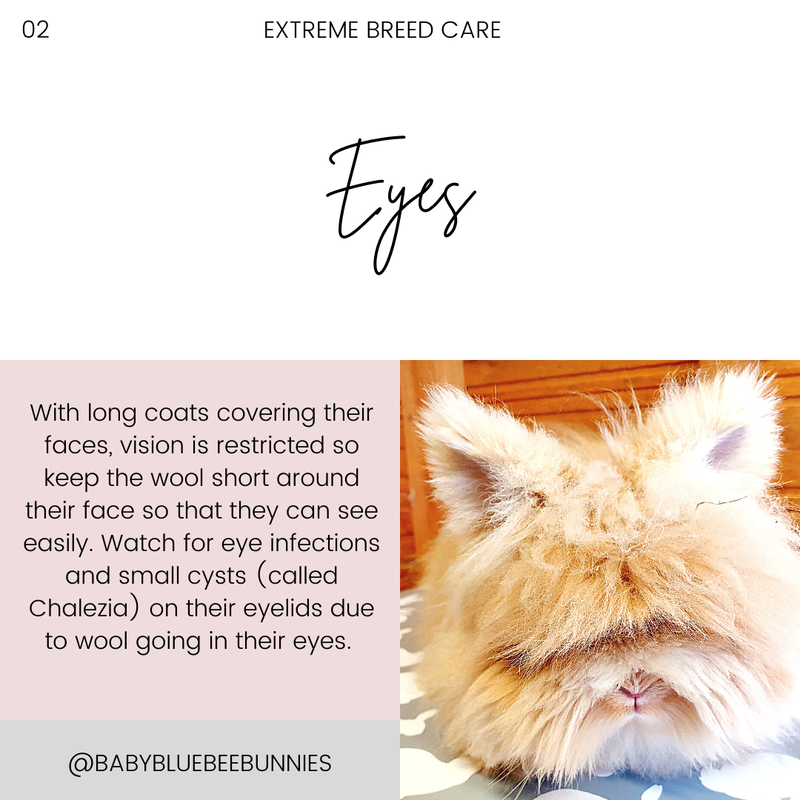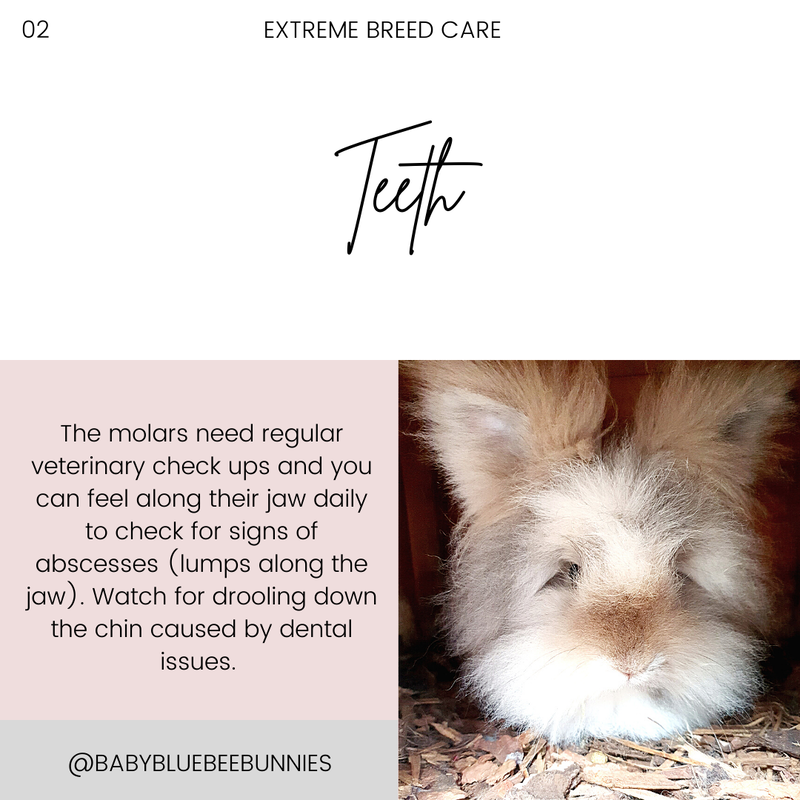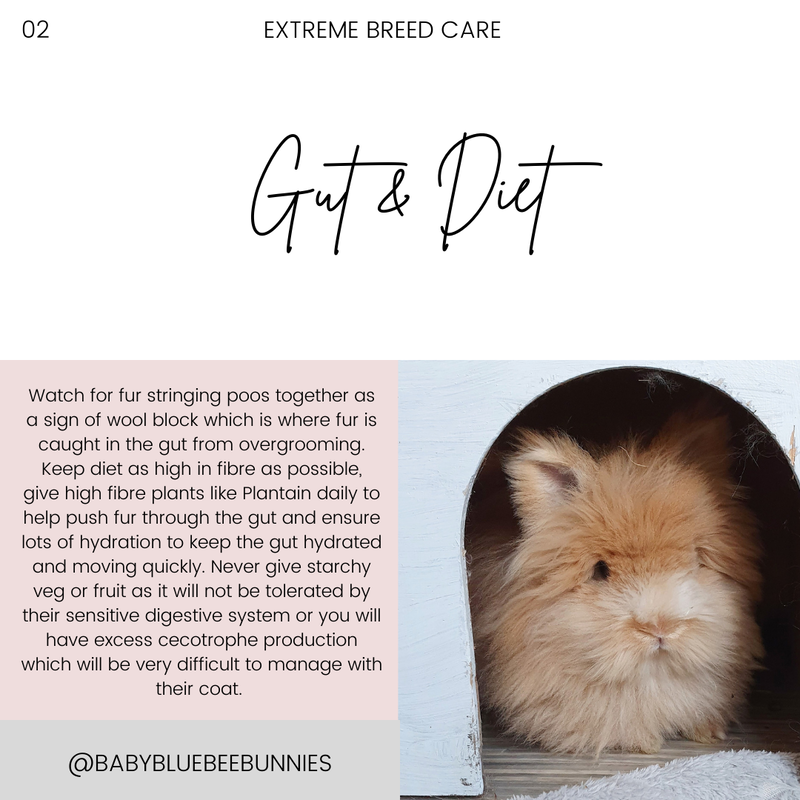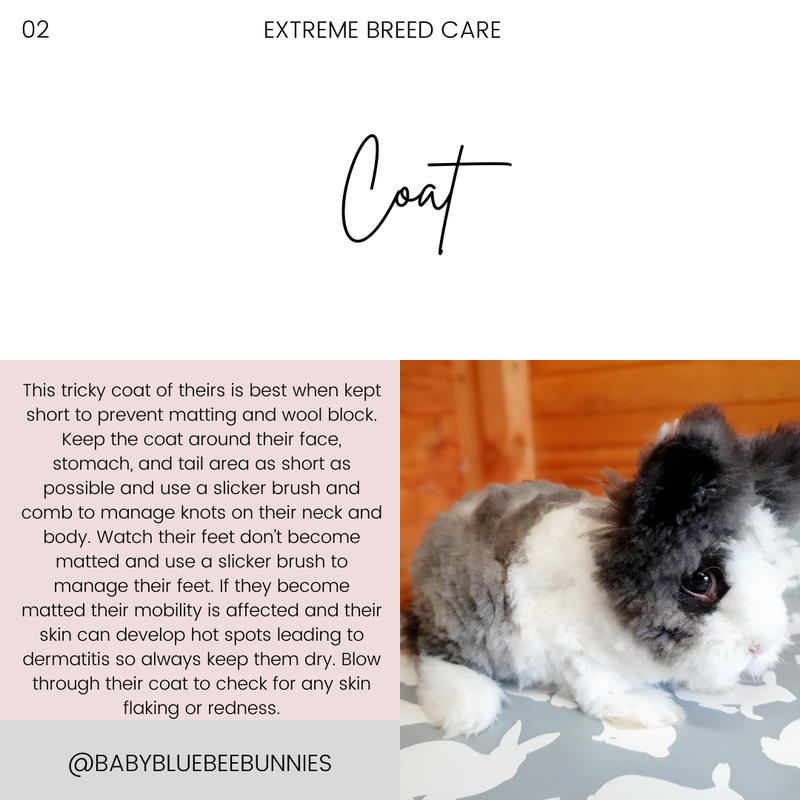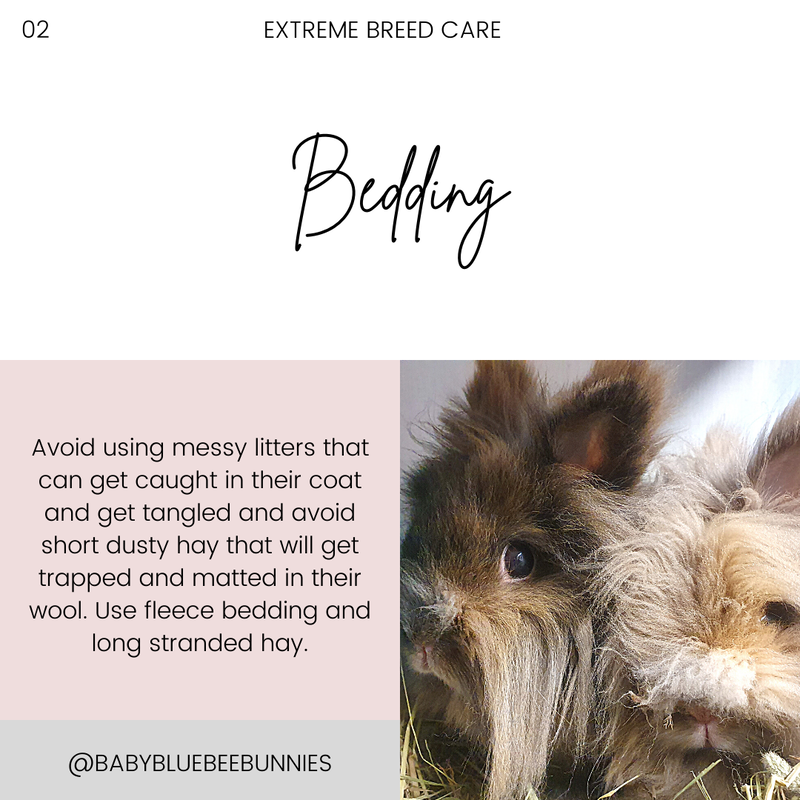Double Maned Lionheads
DM lionheads have both wool and fur and short, compact characteristics. It is believed they originated from the netherland dwarf, which would explain their short upright ears and flat round faces. This breed has gained popularity in recent years, often purchased and later given up due to their extreme high maintenance.
What are the additional care needs that come with this breed?
Eyes – With long coats covering their faces, vision is restricted so keep the wool short around their face so that they can see easily. Watch for eye infections and small cysts (called Chalezia) on their eyelids due to wool going in their eyes.
Teeth – The molars need regular veterinary check ups and you can feel along their jaw daily to check for signs of abscesses (lumps along the jaw). Watch for drooling down the chin caused by dental issues.
Gut & Diet – Watch for fur stringing poos together as a sign of wool block which is where fur is caught in the gut from overgrooming. Keep diet as high in fibre as possible, give high fibre plants like Plantain daily to help push fur through the gut and ensure lots of hydration to keep the gut hydrated and moving quickly. Never give starchy veg or fruit as it will not be tolerated by their sensitive digestive system or you will have excess cecotrophe production which will be very difficult to manage with their coat.
Bedding – Avoid using messy litters that can get caught in their coat and get tangled and avoid short dusty hay that will get trapped and matted in their wool. Use fleece bedding and long stranded hay.
Coat – This tricky coat of theirs is best when kept short to prevent matting and wool block. Keep the coat around their face, stomach, and tail area as short as possible and use a slicker brush and comb to manage knots on their neck and body. Watch their feet don’t become matted and use a slicker brush to manage their feet. If they become matted their mobility is affected and their skin can develop hot spots leading to dermatitis so always keep them dry. Blow through their coat to check for any skin flaking or redness.
What are the additional care needs that come with this breed?
Eyes – With long coats covering their faces, vision is restricted so keep the wool short around their face so that they can see easily. Watch for eye infections and small cysts (called Chalezia) on their eyelids due to wool going in their eyes.
Teeth – The molars need regular veterinary check ups and you can feel along their jaw daily to check for signs of abscesses (lumps along the jaw). Watch for drooling down the chin caused by dental issues.
Gut & Diet – Watch for fur stringing poos together as a sign of wool block which is where fur is caught in the gut from overgrooming. Keep diet as high in fibre as possible, give high fibre plants like Plantain daily to help push fur through the gut and ensure lots of hydration to keep the gut hydrated and moving quickly. Never give starchy veg or fruit as it will not be tolerated by their sensitive digestive system or you will have excess cecotrophe production which will be very difficult to manage with their coat.
Bedding – Avoid using messy litters that can get caught in their coat and get tangled and avoid short dusty hay that will get trapped and matted in their wool. Use fleece bedding and long stranded hay.
Coat – This tricky coat of theirs is best when kept short to prevent matting and wool block. Keep the coat around their face, stomach, and tail area as short as possible and use a slicker brush and comb to manage knots on their neck and body. Watch their feet don’t become matted and use a slicker brush to manage their feet. If they become matted their mobility is affected and their skin can develop hot spots leading to dermatitis so always keep them dry. Blow through their coat to check for any skin flaking or redness.
